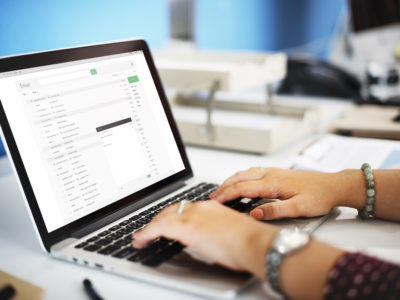Sending emails is easy. However, long-term and effective email strategies that grow your brand require a broad-based approach using the best email marketing practices.
Not knowing the necessary guidelines could mean send-outs that appear inappropriate on mobiles, mailing lists that are big but unengaged, or emails that never opened.
However, by focusing on result-oriented email marketing practices, you’ll be able to connect with customers and grow the brand exponentially by turning users into sales.
This is specifically true as email marketing remains amongst the best marketing channels even today.
The Data Behind Email Marketing
Here are some stats to prove the dominance of email marketing:
- There are approximately 4B email users worldwide using emails daily
- More than 63% of marketers and businesses employ email to reach prospective customers
- Email generates more than $41 for every one dollar spent
If you’re a new start-up who has started recently with email or a big enterprise with a growing email list, we’ll help develop email marketing strategies that work.
7 Of The Best Email Marketing Practices
The key to a successful marketing campaign is a well-thought-out email marketing campaign. And here is how you achieve that:
1. Utilize Double Opt-In For Email Signups
(c) GetVero.com
Using a double opt-in subscription system can improve your email deliverability which, in its turn, helps avoid the email spam folder essentially, and the quality of your contact list for better overall email marketing.
It can enhance email deliverability and the quality of the mailing list for improved email marketing. With that said, here are a few reasons why you should use double opt-in:
- Acquire better-qualified leads
- Create a robust relationship with customers from the outset
- Improve email deliverability
Compared to single opt-in email signups, double opt-in helps businesses collect emails with an added confirmation step to ensure you’ve got the user’s permission.
This technique prevents bogus signups and ensures your business complies with anti-spam laws and regulations such as General Data Protection Regulation (GDPR).
Here’s a quick sneak peek into double opt-ins:
- Website visitors fill out signup forms on the landing page of your website
- Afterwards, they receive emails confirming signups for the mailing list
- After verification, they’re officially your subscribers who have opted-in to get emails
2. Send Welcome Emails
After customers have opted-in to receive emails, send welcome emails to establish early connections and prep them for things to come.
Welcome emails have open rates of about 86%, so they’re worth trying out. In addition, some of the best email services let businesses send automated welcome emails once subscribers join in.
However, before sending, make sure the welcome emails are relevant and evergreen to customers.
Here are some efficient ways you can utilize to make first emails impressive and interactive:
- Introduce your business or brand and yourself: Tell new subscribers about your brand, and bring them backstage; this will help create brand affinity. Add customized touches such as team photos, handwritten signatures, and more
- Provide a promotional or discount offer: Often, brands incentivize website users to signup for emails by offering a discount offer on their maiden order. If that’s the case, you can utilize welcome emails to track that promise, offering users a promotional code and curating a range of products to spend on.
Remember, first contact is like a once-in-a-while opportunity you should never squander; instead, establish the motive for welcome emails that serve various business goals.
3. Avoid Employing No-Reply Email Addresses
(c) Convertful.com
Avoid utilizing no-reply email addresses. This is because “no-reply” emails prevent readers from responding to the sender. Doing so is one of the best things you can do as part of your email marketing campaigns.
Rather than using no-reply emails, choose valid email addresses that users can respond to. Here’s how the two differ from one another:
- No-reply email addresses: This email address isn’t established to take incoming emails from subscribers. They’re primarily structured as “noreply@business.com.” It’s a perfect choice for a transactional email, i.e., shipping or buying verifications, password resets, and more; however, you should avoid using them for routine emails to users
- Valid email addresses: It’s used for receiving incoming emails from subscribers. They’re mostly stylized like this “Jordan@company.com” or “hello@business.com.” It’s ideal for sending emails to your subscribers
4. Keep Emails Up To 650-Pixels Wide at Most
If email templates are wider than 650-pixels, chances are the email won’t appear correctly and may require readers to scroll horizontally for reading the entire email.
It’s such a pain, at the very least, and will probably affect your sales and conversions.
However, if you’ve appropriate templates that fit in the standardized format, it will make readability a lot easier and ensure improved conversions and user experience.
5. Personalize Emails
(c) Striata.com
Forge strong connections with readers and offer them value by personalizing emails you regularly send. According to one report, 1.75% of email revenue stems from personalized emails. In addition, it increases both engagement and conversions.
Though there are various effective ways to add personal touches to emails, the most productive one is by addressing users by their names.
Various studies prove that 50% of users click open an email based on subject lines having their names.
In addition, you can utilize merge tags that add customized information to emails.
Always choose email services that offer robust automation features, allowing you to make a one-of-a-kind email experience for subscribers.
Here are some ways you can add a personalization touch:
- Browsing emails: Email platforms that incorporate the website allow you to send subscribers emails depending on the browsing history. For example, if you have got an online shop, with the help of automation, you can advertise items they checked but didn’t purchase
- Abandoned shopping cart emails: Often, customers leave the cart without buying anything. These emails could send shoppers a reminder, prompting them to purchase
6. Always Include Logo
According to a 2020 study by Red Sift and Entrust, logos significantly impact email engagements and brand recall. For example, brand recall saw a staggering rise of 18% when businesses and marketers included their logos in emails.
In addition, the likelihood of purchase also increased by an enormous 34%. Taking this into account, always add logos to email designs to ensure they’re included.
7. Stick With Fewer Typefaces
Are you looking for better and increased conversions? If so, ensure to have less clutter in the email.
Never send marketing emails with anything above two typefaces or fonts, as that could distract users and ruin the email’s visibility.
In addition to that, utilize web-safe typefaces with sizes ranging from 10-12 points. It makes sure your emails will be readable on all devices.
Takeaway
Email is one of the most robust tools available, utilized for a very long time to help businesses and brands create awareness and attract sales.
However, if businesses want better and improved outcomes, they must enhance their email game and resort to tried-and-tested email practices.
Efficient campaigns could make a huge difference in reaching customers, driving sales, and customer retention.
Ready to use email marketing in your business? Learn more about email marketing in the Philippines today!





